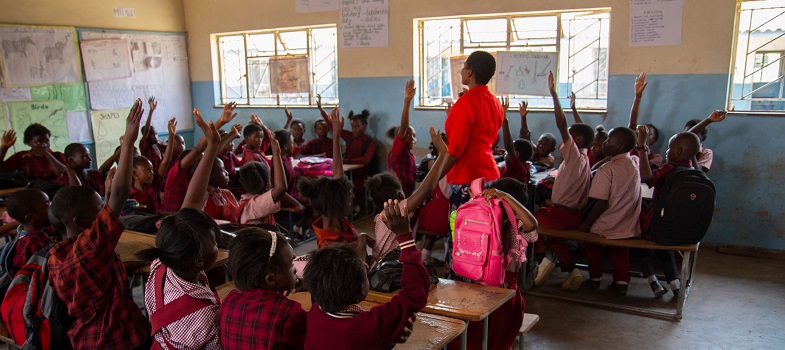Training guide
2. Questioning to promote thinking
2.3. Questioning practice
Activity 1.7: Questioning in actionWatch the video below which is made of four short extracts, three from one lesson plus a fourth extract from another lesson. Now consider the following questions:
Plan a set of questions that you could use in your classroom later this week. If it is helpful, use the classroom example below to get some ideas that you could adapt. |
Classroom Example 1.1: Using questioningRead the following classroom example together. James was teaching a class of 90 with Grades 1, 2 and 3 in the same room. In the corner of the classroom he made a ‘shop’. Over a few weeks he and the children had assembled a collection of old food packets, which he arranged on a ‘table’ made from a large cardboard box he got from a shop-keeper in the nearby town. He had put price labels on all the items. In a maths lesson, he wrote three different sets of questions on the chalkboard:
The children worked in pairs in their own grade levels. At the end of the lesson, he asked the Grade 3 students to check the work of the Grade 1 and 2 students and to report back to him how they had done. While they were working, he listened carefully to the conversations. He made a note of those who seemed to need more help, so that he could support them in the future. By using skilful and carefully-targeted questioning, James was able to use the same resource to make sure that all the children had the opportunity to learn. |
|
Did you notice...
|
